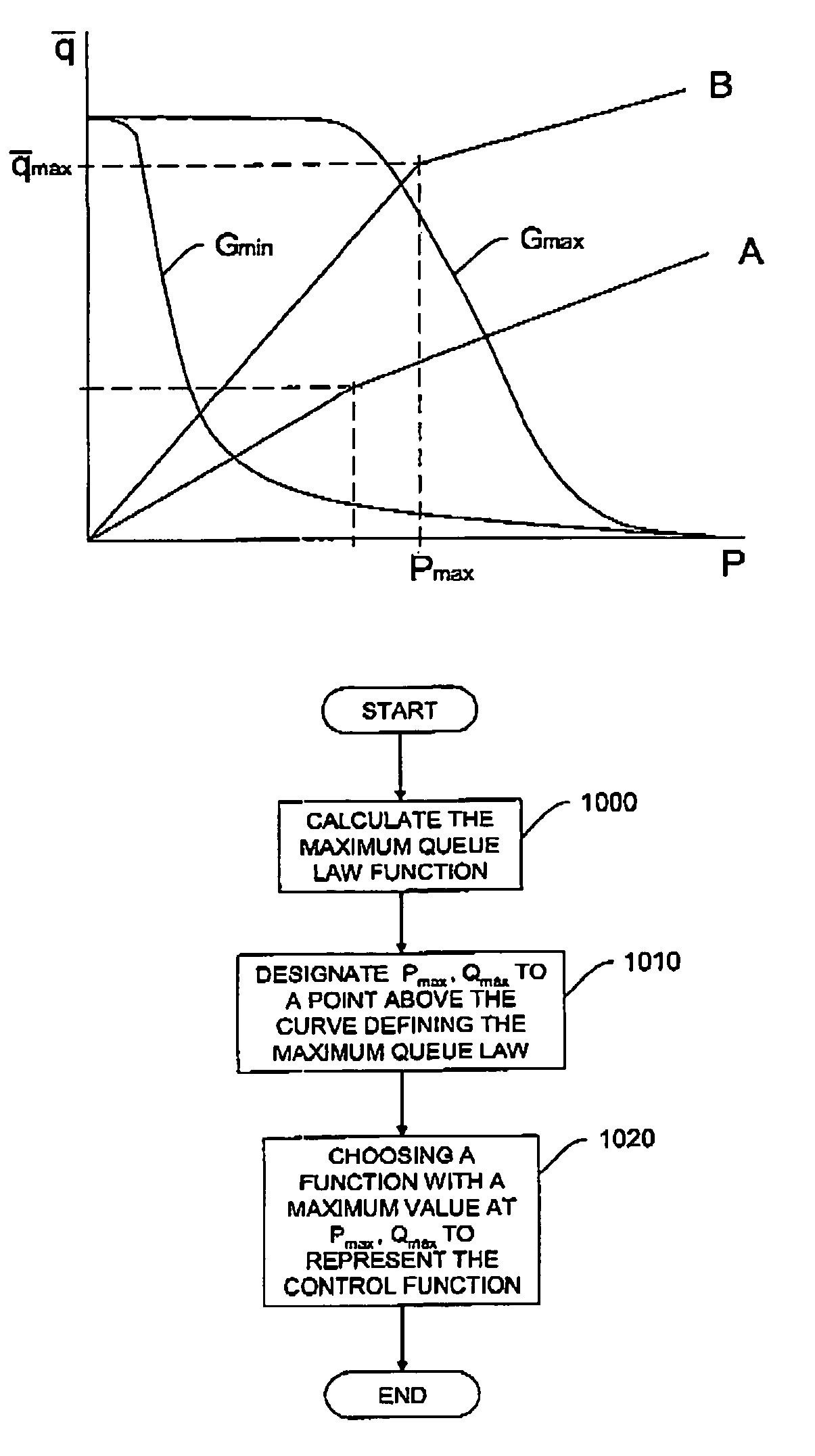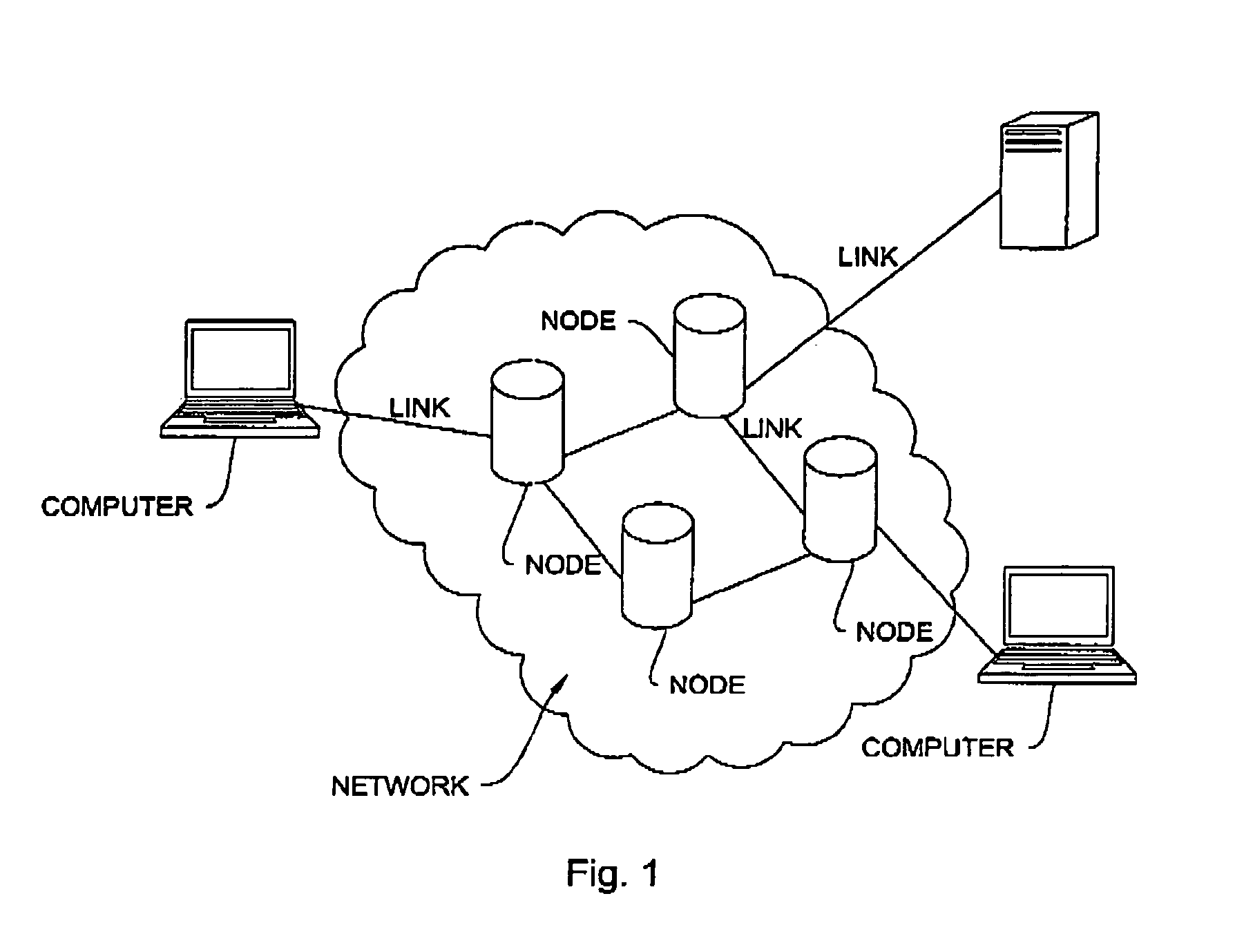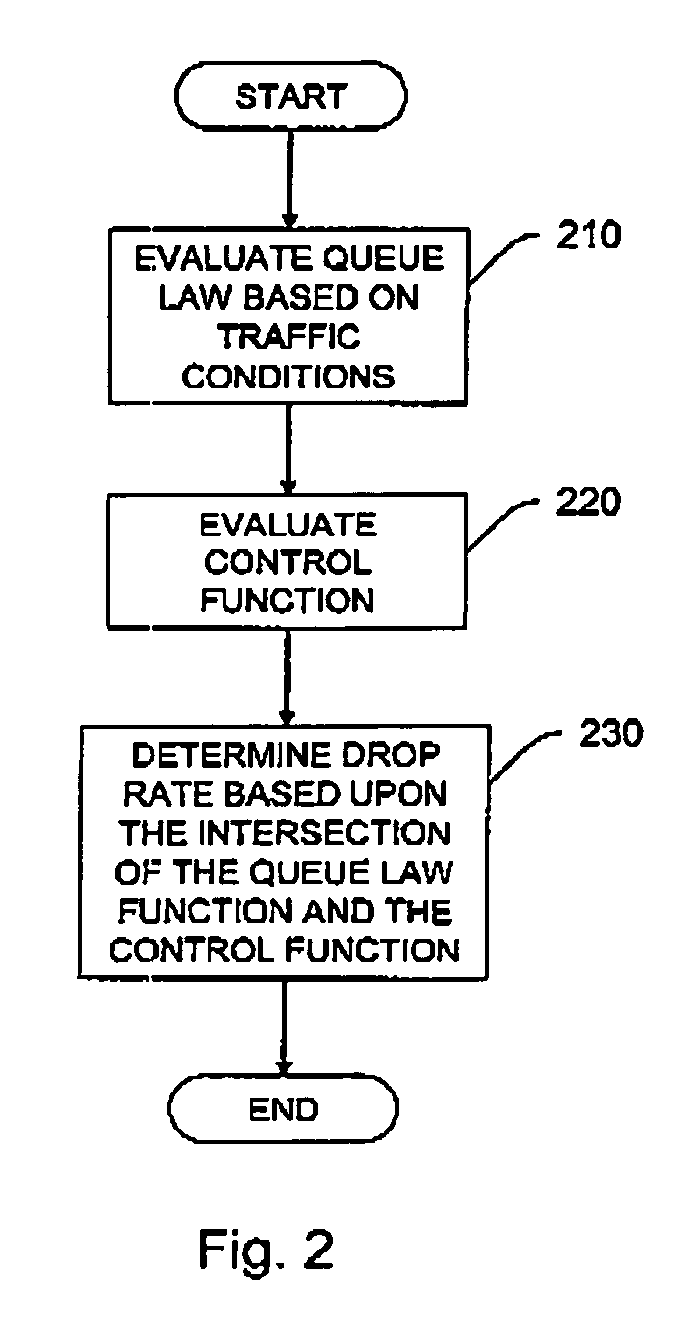Method and apparatus for queue modeling
a queue and model technology, applied in the field of network management, can solve problems such as data delay at the receiver, resource demand exceed capacity, and congestion in the network
- Summary
- Abstract
- Description
- Claims
- Application Information
AI Technical Summary
Benefits of technology
Problems solved by technology
Method used
Image
Examples
Embodiment Construction
[0028]FIG. 1 shows a schematic drawing of a communications network in which the apparatus and method for queue management may be implemented. The communications network, such as the Internet, connects computers and other processing devices to other computers, servers, and processing devices via nodes so that data may be sent, received, and retrieved. All devices that forward and filter data, such as, but not limited to, routers, bridges, b-routers, switches, repeaters and gateways will be referred to as nodes in the following description and claims and all connections between such nodes shall be referred to as links.
[0029]In the following description and appended claims the term “flow” shall refer to a signal representative of data sent from a sending node to a receiving node. In the description and the claims the term “capacity” refers to the total amount of data that a link can process in a given time and is equivalent to line speed.
[0030]Nodes within the network each have at leas...
PUM
 Login to View More
Login to View More Abstract
Description
Claims
Application Information
 Login to View More
Login to View More - R&D
- Intellectual Property
- Life Sciences
- Materials
- Tech Scout
- Unparalleled Data Quality
- Higher Quality Content
- 60% Fewer Hallucinations
Browse by: Latest US Patents, China's latest patents, Technical Efficacy Thesaurus, Application Domain, Technology Topic, Popular Technical Reports.
© 2025 PatSnap. All rights reserved.Legal|Privacy policy|Modern Slavery Act Transparency Statement|Sitemap|About US| Contact US: help@patsnap.com



